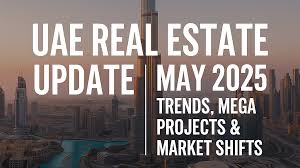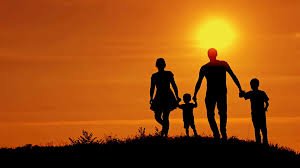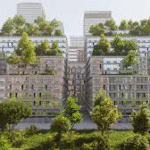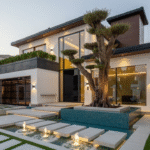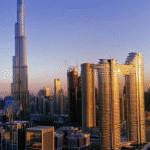Now Reading: 7 Strong Benefits from Sustainability-Certified Residential Projects in 2025
-
01
7 Strong Benefits from Sustainability-Certified Residential Projects in 2025
7 Strong Benefits from Sustainability-Certified Residential Projects in 2025

Table of Contents
Sustainability-Certified: The UAE real estate market reached AED 664.5 billion ($181 billion) in 2024, up 31.4%, with 175,000 transactions, per UAE Central Bank. Sustainability-certified projects, aligned with UAE’s Net Zero 2050 goal, grew 22%, per Emirates Green Building Council.
These projects, certified by Estidama Pearl Rating, LEED, or WELL, offer 6–9% rental yields and 5–10% price growth, per Cushman & Wakefield. With 100% foreign ownership, no capital gains tax (CGT), and AED 2 million ($545,000) Golden Visa eligibility, sustainable residences attract global investors. This article outlines seven benefits of sustainability-certified residential projects in the UAE in 2025, with U.S. tax considerations, without external links.
Why Sustainable Projects Thrive in the UAE?

The UAE’s 4.3% GDP growth forecast, 10 million population, and 30 million tourists in 2024 drive housing demand, per World Bank and UAE Tourism. Green certifications reduce energy use by 30% and water by 20%, per EmiratesGBC, boosting appeal in Dubai, Abu Dhabi, and Ras Al Khaimah. Key impacts include:
- Price Premium: 5–8% higher values for certified properties.
- Rental Demand: 85–90% occupancy in sustainable communities.
- Tax Efficiency: No CGT; 9% Corporate Tax (CT) above AED 375,000 ($102,000) offset by IRS Form 1116.
- FDI Surge: AED 50 billion ($13.6 billion) in green real estate FDI in 2024.
7 Strong Benefits of Sustainability-Certified Residential Projects in 2025
1. Lower Utility Costs Enhance Investor Returns
Certified projects like Masdar City’s The Link in Abu Dhabi cut energy costs by 30% and water by 20%, saving AED 5,000–10,000 annually, per Top Luxury Property. This boosts net yields from 6% to 7–8%.
- Impact: Increases ROI by 1–2%; attracts eco-conscious tenants.
- U.S. Tax Consideration: Maintenance deductions on Schedule E; assets over $50,000 on Form 8938.
- Action: Invest in Masdar’s green apartments; verify savings via Estidama Pearl Rating.
2. Higher Property Values Drive Capital Gains
Sustainable properties in Dubai’s Sobha Hartland, LEED-certified, command 5–8% price premiums, with apartments averaging AED 1.8 million, up 7% in 2024, per Property Finder. Abu Dhabi’s Saadiyat Grove sees 10% growth.
- Impact: Supports 5–10% capital appreciation; enhances resale profits.
- U.S. Tax Consideration: Capital gains on Form 8949; defer via IRS Section 1031 on Form 8824.
- Action: Buy Sobha’s Crest Grande; check certifications via Dubai Municipality.
3. Increased Tenant Demand Boosts Occupancy
WELL-certified projects like RAK’s Mina Al Arab achieve 90% occupancy, with rents up 15% to AED 80,000/year, per Bayut. Health-focused amenities like air filtration draw families and professionals.
- Impact: Reduces vacancies by 10%; stabilizes 6–9% yields.
- U.S. Tax Consideration: Rental income on Form 1040, Schedule E; CT credits on Form 1116.
- Action: Target SORA Beach Residences; register leases via RAK Municipality.
4. Tax-Free Incentives Amplify Net Returns
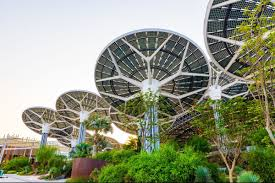
No CGT or property taxes apply to UAE green projects, per UAE Federal Tax Authority. A AED 2 million Yas Island villa yielding 7% generates AED 140,000 tax-free, unlike U.S. property taxes of 1–2%.
- Impact: Boosts net returns by 2–3%; outpaces global markets.
- U.S. Tax Consideration: Report income on Schedule E; accounts over $10,000 on FinCEN Form 114.
- Action: Invest in Aldar’s Yas Riva; verify tax status via ADREC.
5. Global Investor Appeal Strengthens FDI
Estidama-certified projects like Abu Dhabi’s Al Raha Beach drew AED 7.86 billion in FDI in 2024, up 125%, per ADREC. Dubai’s Sustainable City attracted 20% more international buyers, per Knight Frank.
- Impact: Enhances liquidity; supports 5–7% price growth.
- U.S. Tax Consideration: Report assets on Form 8938; gains on Form 8949.
- Action: Buy in Emaar’s The Valley; connect with Dubai Land Department.
6. Long-Term Sustainability Aligns with Regulatory Trends
UAE’s mandatory green building codes, effective 2025, favor certified projects, per EmiratesGBC. Ajman’s Al Zorah, with LEED-certified units, ensures compliance, yielding 7–9%, per GJ Properties.
- Impact: Future-proofs investments; avoids retrofit costs of AED 50,000–100,000.
- U.S. Tax Consideration: Depreciation on Form 4562; CT credits on Form 1116.
- Action: Invest in Al Zorah’s Lavender Tower; check compliance via Ajman Municipality.
7. Enhanced Lifestyle Attracts Premium Tenants
Certified communities like Dubai’s MAG City, with green spaces and wellness facilities, command 10–15% rental premiums, per dubizzle. Abu Dhabi’s Hudayriyat Island villas yield 6–8%, per Sands of Wealth.
- Impact: Draws high-income tenants; boosts rents by AED 5,000–15,000/year.
- U.S. Tax Consideration: Rental income on Schedule E; report assets on Form 8938.
- Action: Target MAG’s Keturah Reserve; explore amenities via developer portals.
Key Considerations for U.S. Investors

- Risks:
- Oversupply: 200,000 units by 2026 may soften yields by 0.5–1%, per Cushman & Wakefield.
- Volatility: 5–8% price fluctuations possible, per Omnia Capital.
- Certification Costs: Green upgrades add 1–2% to costs, offset by premiums.
- Tax Compliance: UAE’s 5% VAT on commercial properties and 9% CT apply above AED 375,000. IRS requires Form 1040, Form 1116, Form 8938, Form 8824, Form 4562, and FinCEN Form 114.
- Regulatory Compliance: Municipalities mandate KYC; AML fines up to AED 500,000. Verify via RERA.
- Currency Stability: AED pegged at 1 USD = 3.67 minimizes exchange risk.
Conclusion
UAE’s sustainability-certified residential projects in 2025, from Dubai’s Sobha Hartland to Abu Dhabi’s Masdar City and RAK’s Mina Al Arab, offer lower costs, higher values, strong demand, tax-free returns, global appeal, regulatory alignment, and premium lifestyles. With 6–9% yields and 5–10% growth in a $181 billion market, U.S. investors leveraging IRS credits and tools from ADREC, Dubai Land Department, or RAK Municipality can secure robust returns via developers like Emaar, Aldar, and MAG. Sustainability
read more: 5 Tech Trends Like AI and Blockchain Transforming the Market in 2025



